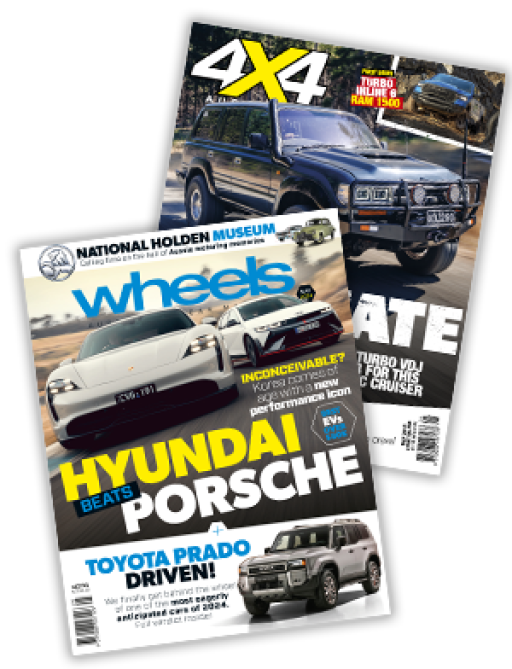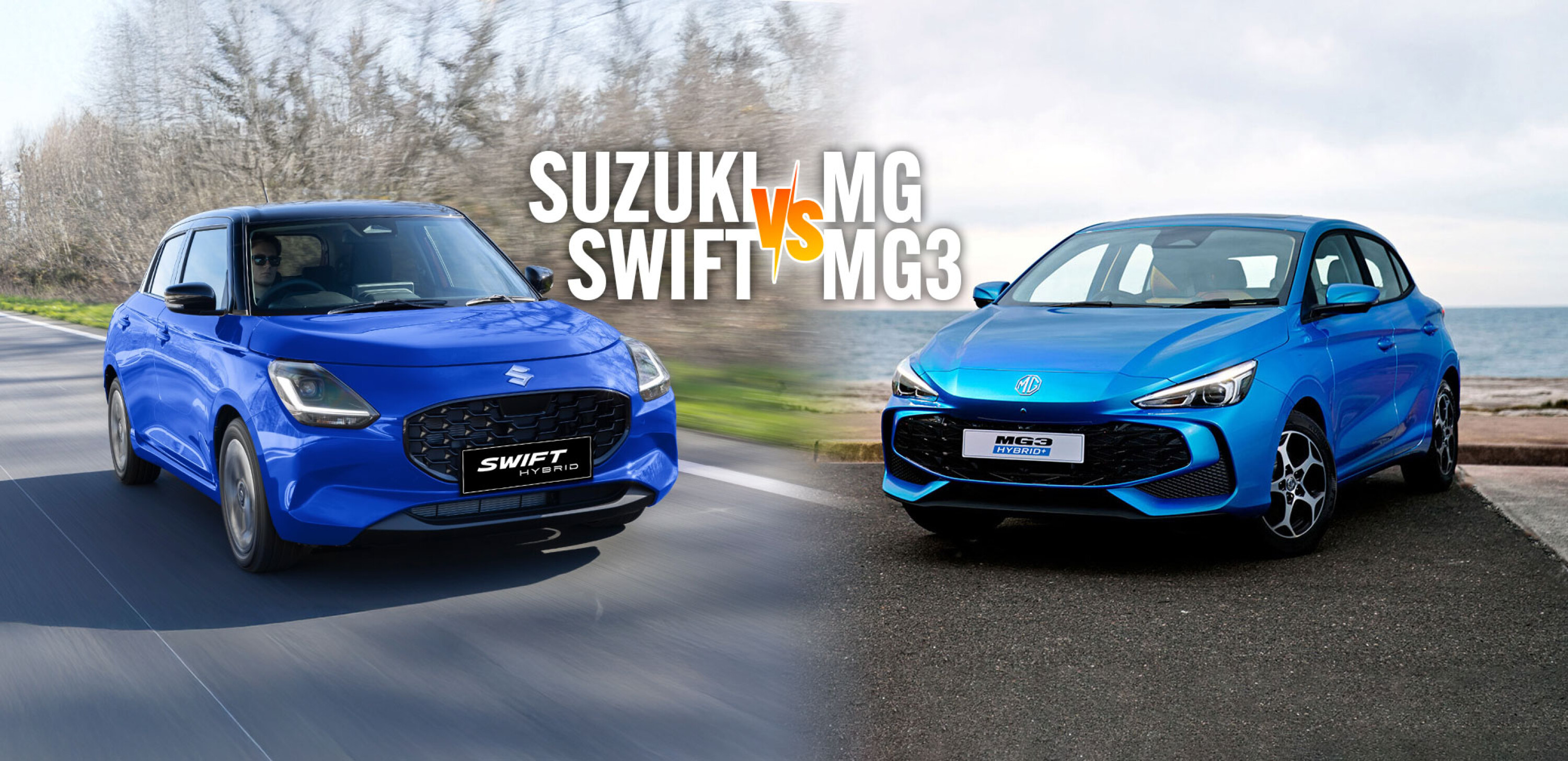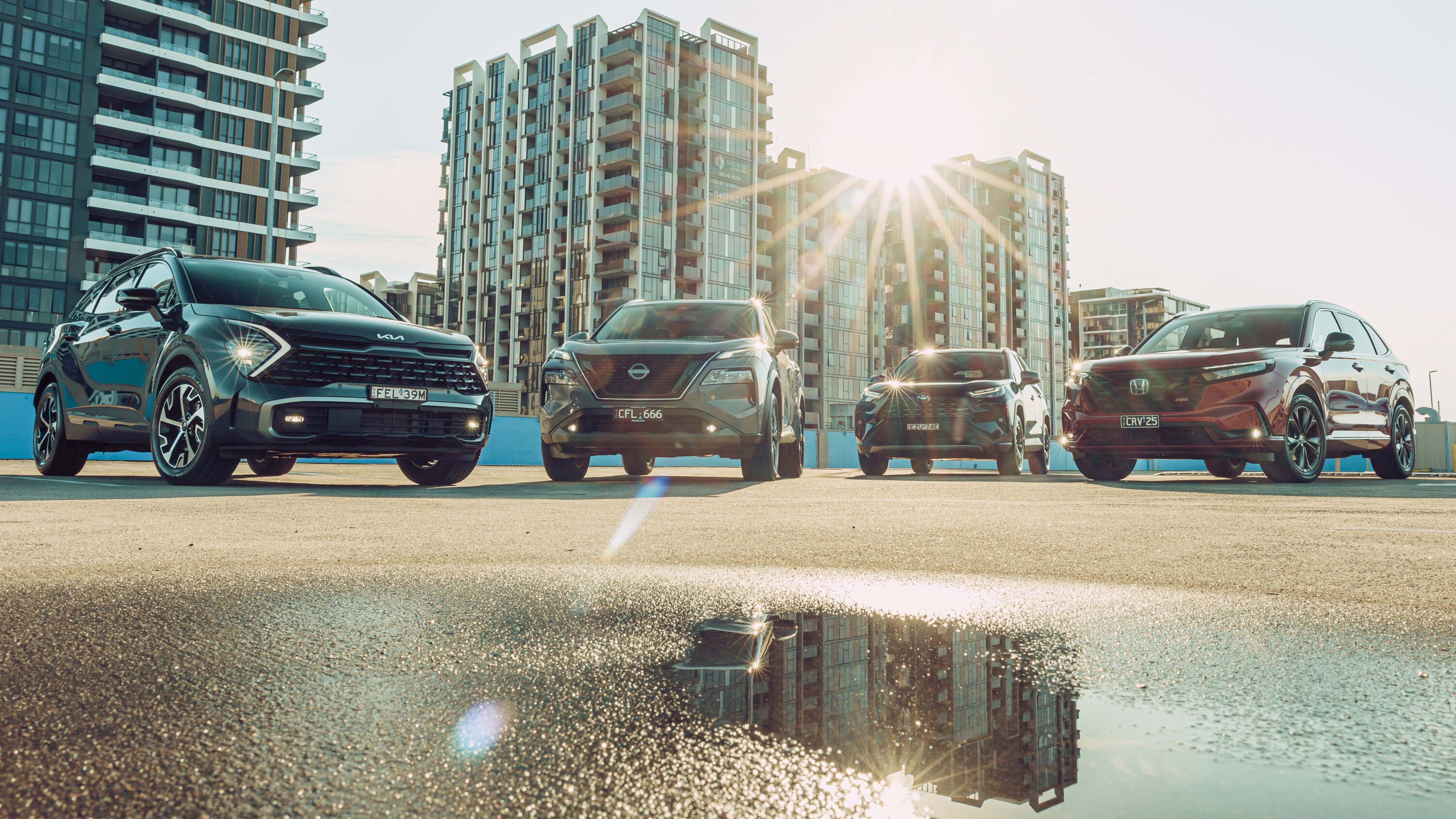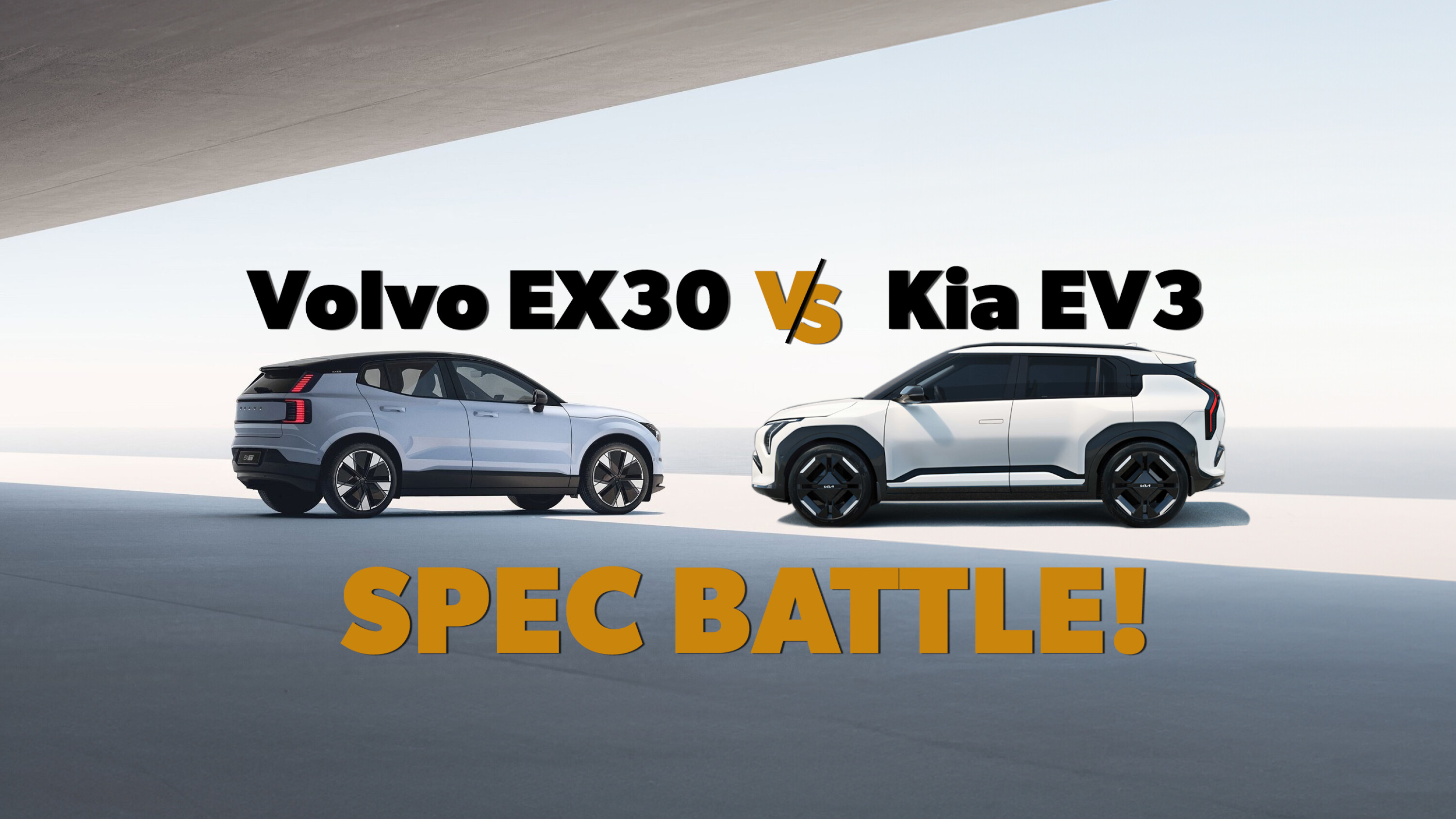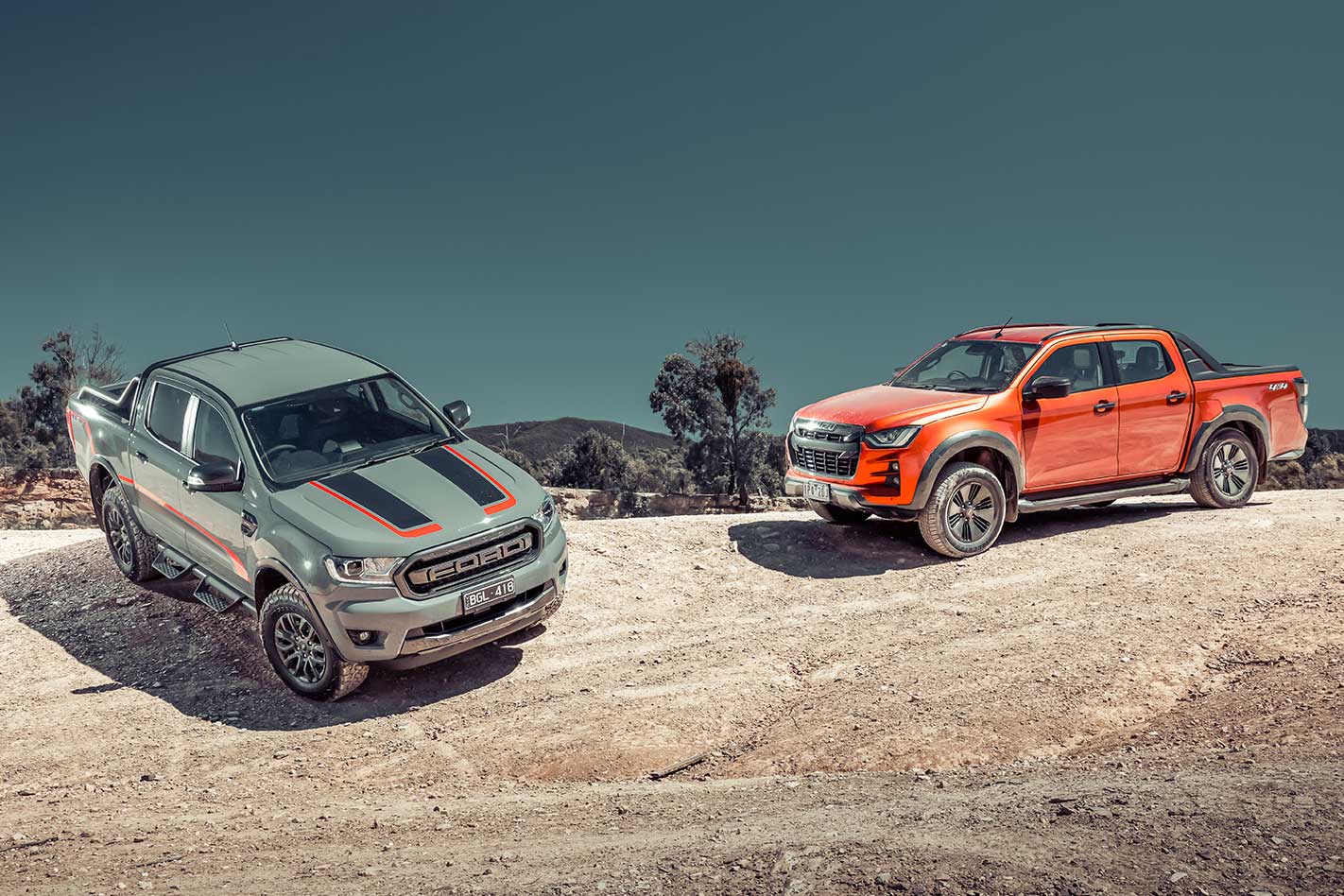
Believe it or not, the grudge match between the Ford Ranger FX4 MAX and Isuzu D-Max X-Terrain – and is way more profound – than most folk realise.
Nearly half a century ago, Holden began importing Isuzu’s preposterously-named Faster to fight Toyota’s (equally ironically badged) HiLux – first as the Chev LUV in 1973 and later the KB, before sticking its own branding on the butt of three subsequent (and highly successful) generations.
That started with the 1981 Rodeo and ended with the 2020 Colorado – and Holden’s demise – last December. And, fun fact, at 48 years, this was GMH’s longest running model line, period, even beating Commodore by half a decade.
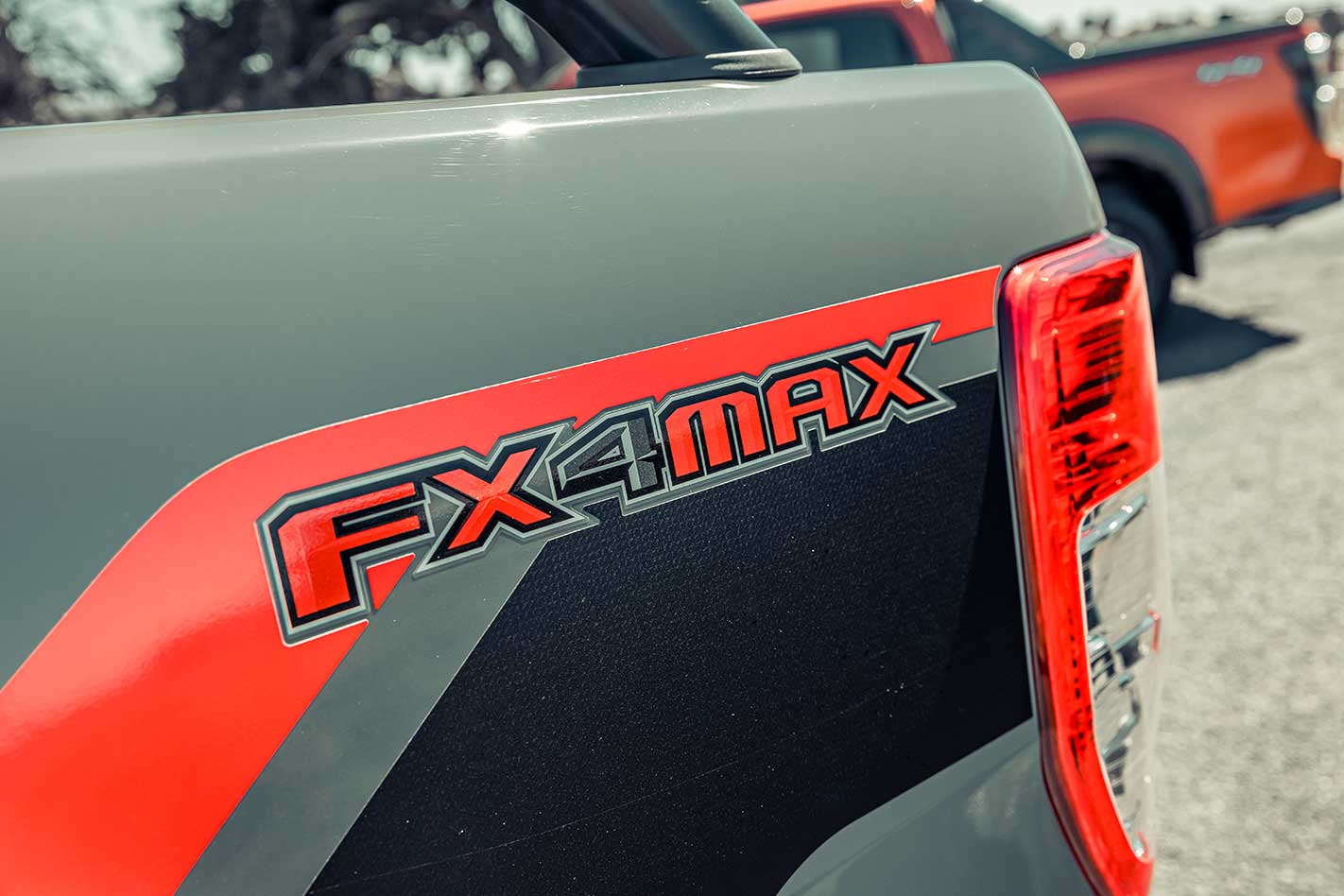
Yep, these truly are the utes and trays of our lives…
Ford, meanwhile, responded with the Mazda B-series truck-based Courier in 1979, eventually renaming it Ranger, but only made real headway with 2011’s locally-designed and engineered T6 (which also sired the superseded Mazda BT-50).
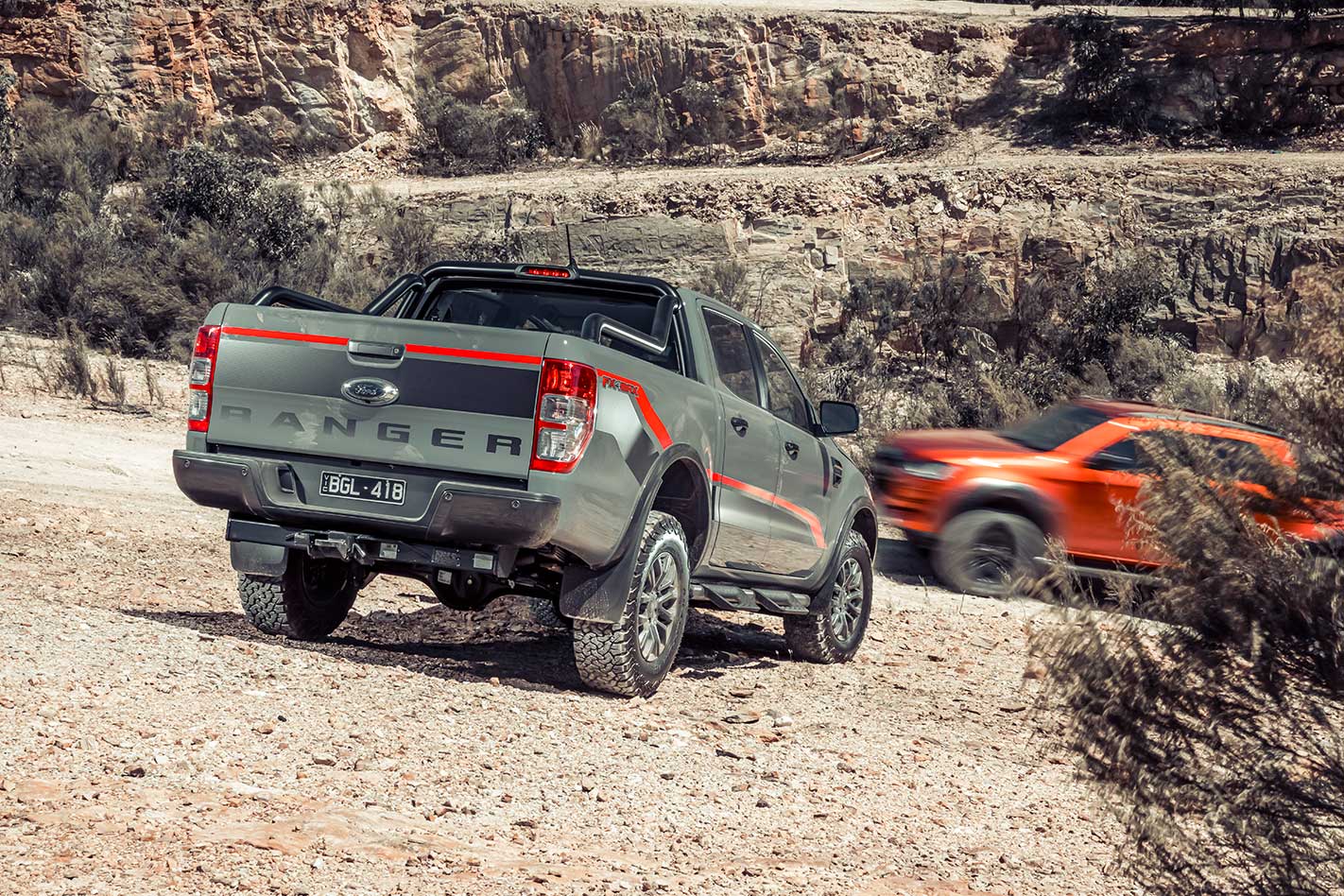
Wheels magazine first pitted the Isuzu-Holden against Ford in an August 1981 four-way, featuring Rodeo, Courier, Datsun 720 and HiLux, with the winning Toyota (the best of a rough bunch) then taking on Holden’s WB ute… and failing.
The same verdict was reached when Rodeo met XF Falcon, Nissan’s Navara and the Mitsubishi Triton in April ’87. Though tough, none troubled the Aussie car-based ute for driveability, comfort or safety.
The only time all three brands – Ford, Isuzu and Holden – have met was in July ’18’s nine-truck comparo, with Ranger beating Colorado and clobbering the last-placed D-Max.
Now Holden’s history, and there’s an all-new Isuzu out to reel the Blue Oval in.
Launched last September, today’s D-Max is the sixth since that original Faster. A ground-up redesign, it’s larger and wider but slightly shorter, stronger yet lighter, substantially safer and technologically far more advanced than its popular predecessor.
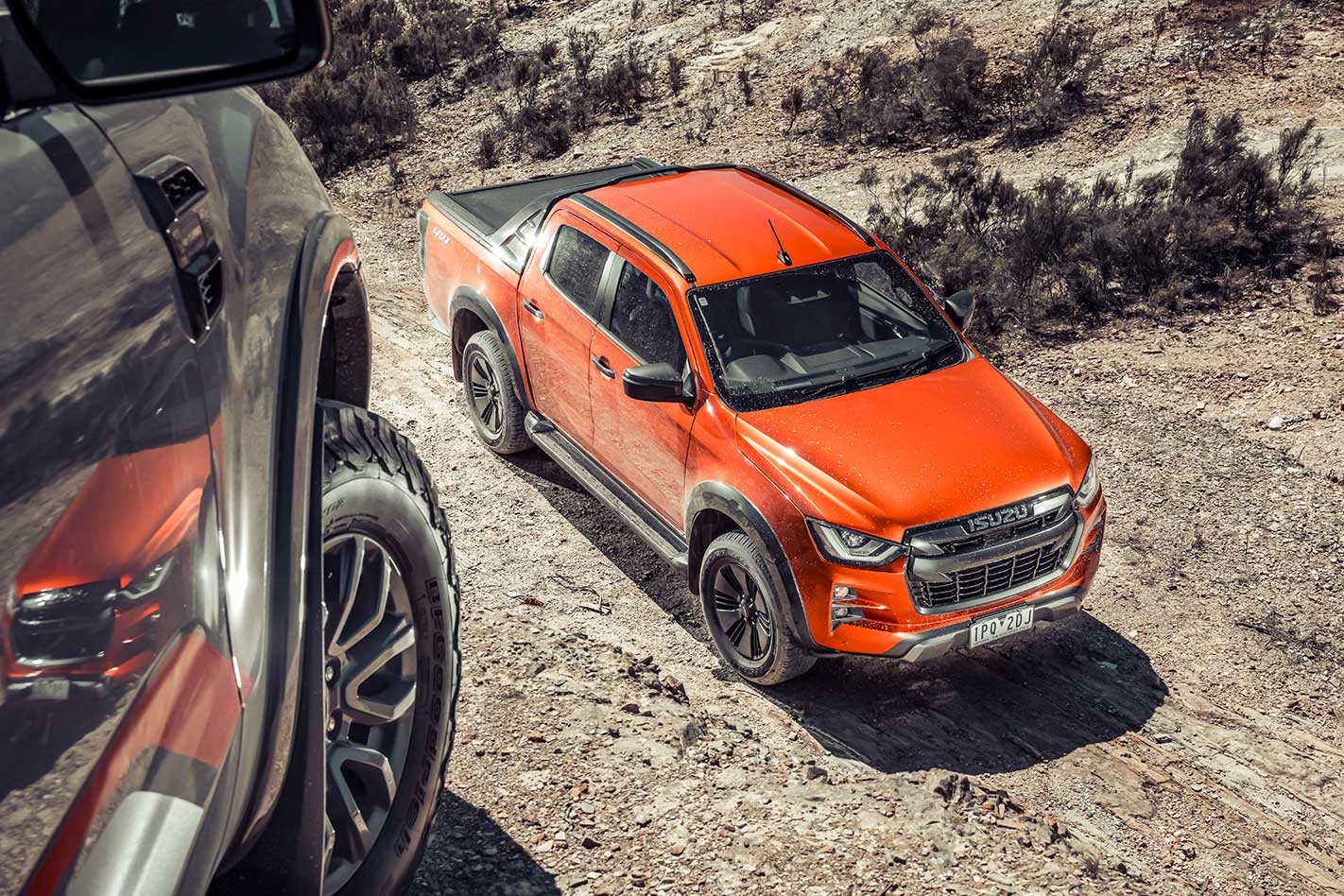
Despite all this, the Isuzu succumbed to the more on-road focussed Ranger Wildtrak in our November 2020 issue, but only just; so, for this year we’re levelling the playing field by pitching it against Ford’s recently released FX4 MAX Max – basically a Ranger with big hiking boots.
This is still a predominantly on-road and gravel-driving assessment given the urban target market for both glamour trucks, but one that doesn’t put the D-Max at a disadvantage.
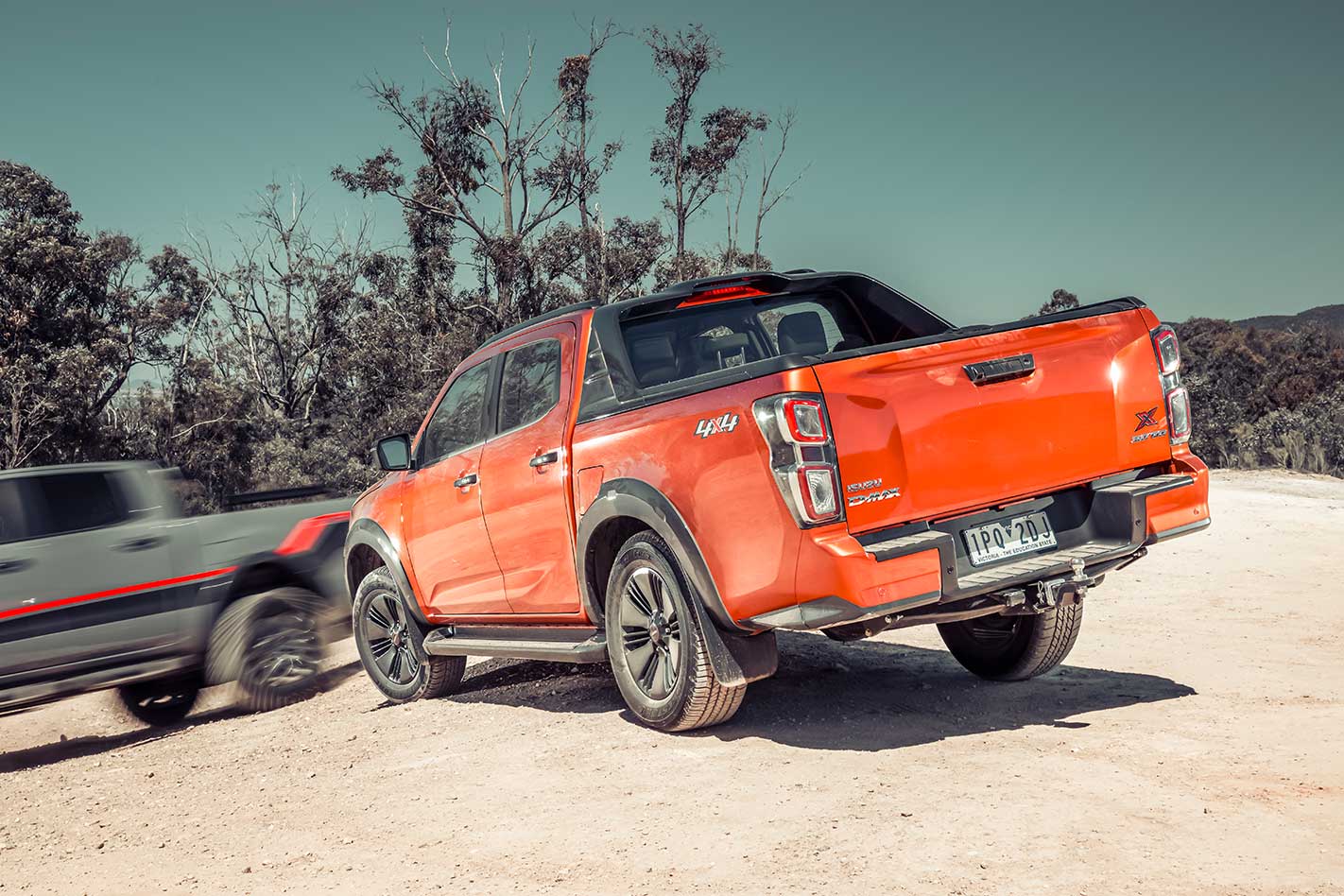
Like mums who’d choose Meadow Lea, for standardising such driver-assist essentials, Isuzu ought to be congratulated.
Punters are also likely to respond to the Isuzu flagship’s chunky styling, standard roller tonneau cover, under-rail tub liner, 18-inch alloys and 9.0-inch touchscreen – starring a reverse camera, voice command, wired Android Auto and wireless Apple CarPlay, digital radio and sat-nav.
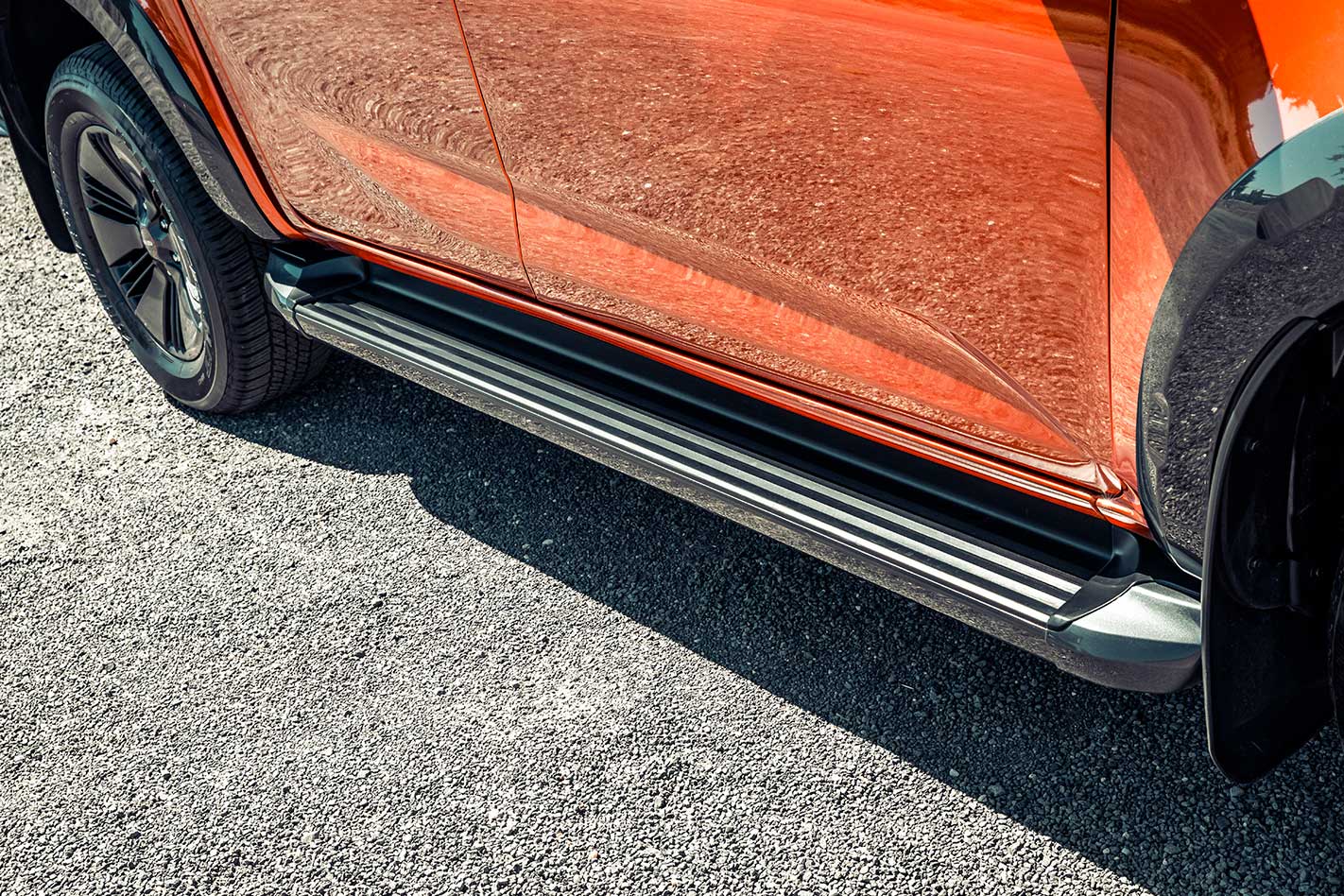
The PX III Ranger is the era-defining T6’s final year before the 2022 redesign is revealed. The last important update came in late 2018, three years after the big PX II facelift and cabin restyle that also saw myriad engineering updates designed chiefly to improve efficiency and off-road performance.
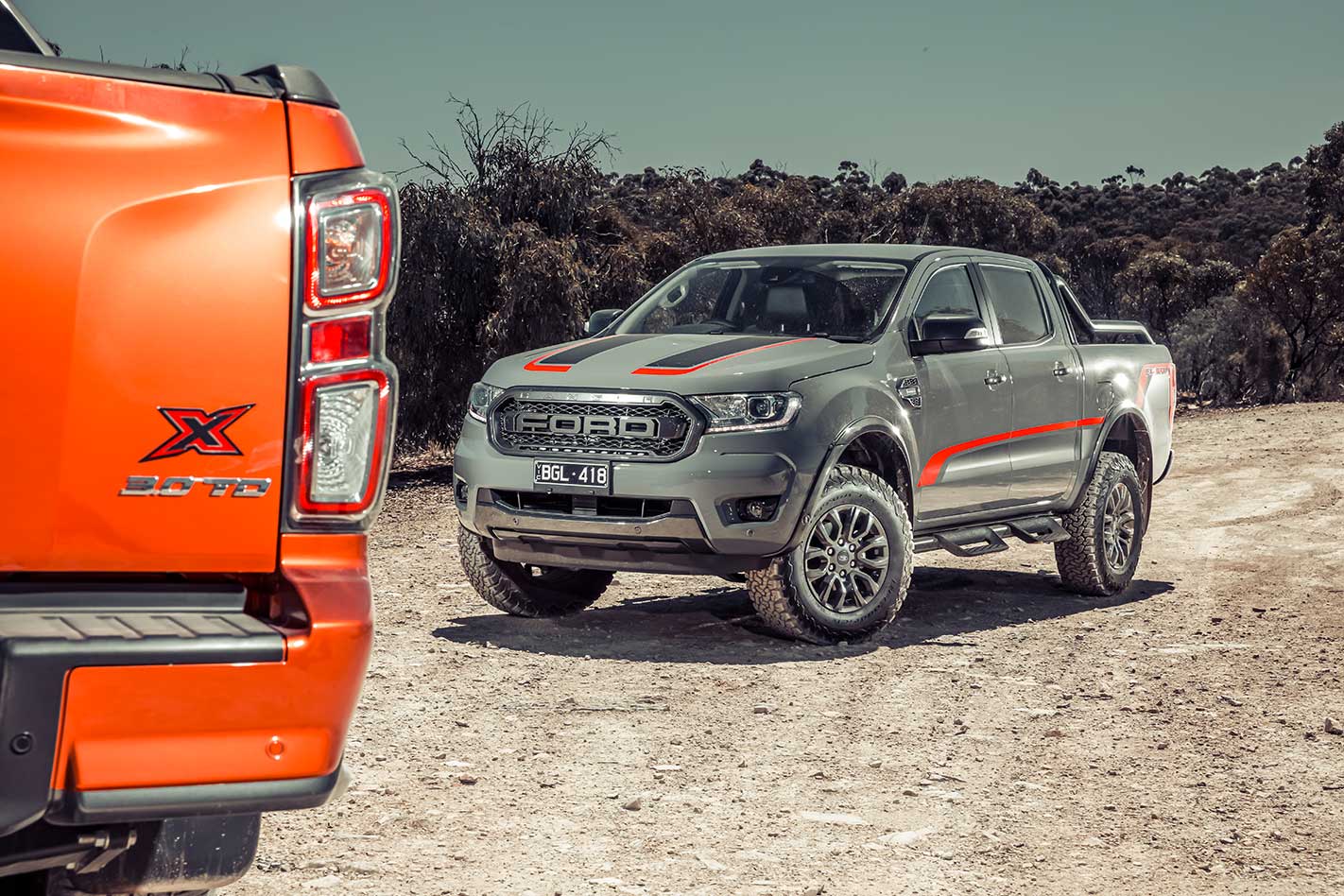
Sadly, though, its 26mm-wider track doesn’t encompass the even-fatter latter’s coil-sprung rear end (leaf springs – albeit revised – continue).
More importantly, priced from $65,940 plus on-road costs, the FX4 MAX is about $5K above the X-Terrain, even before the $850 adaptive cruise option (without the D-Max’s stop/go tech but with Ranger-exclusive auto parking).
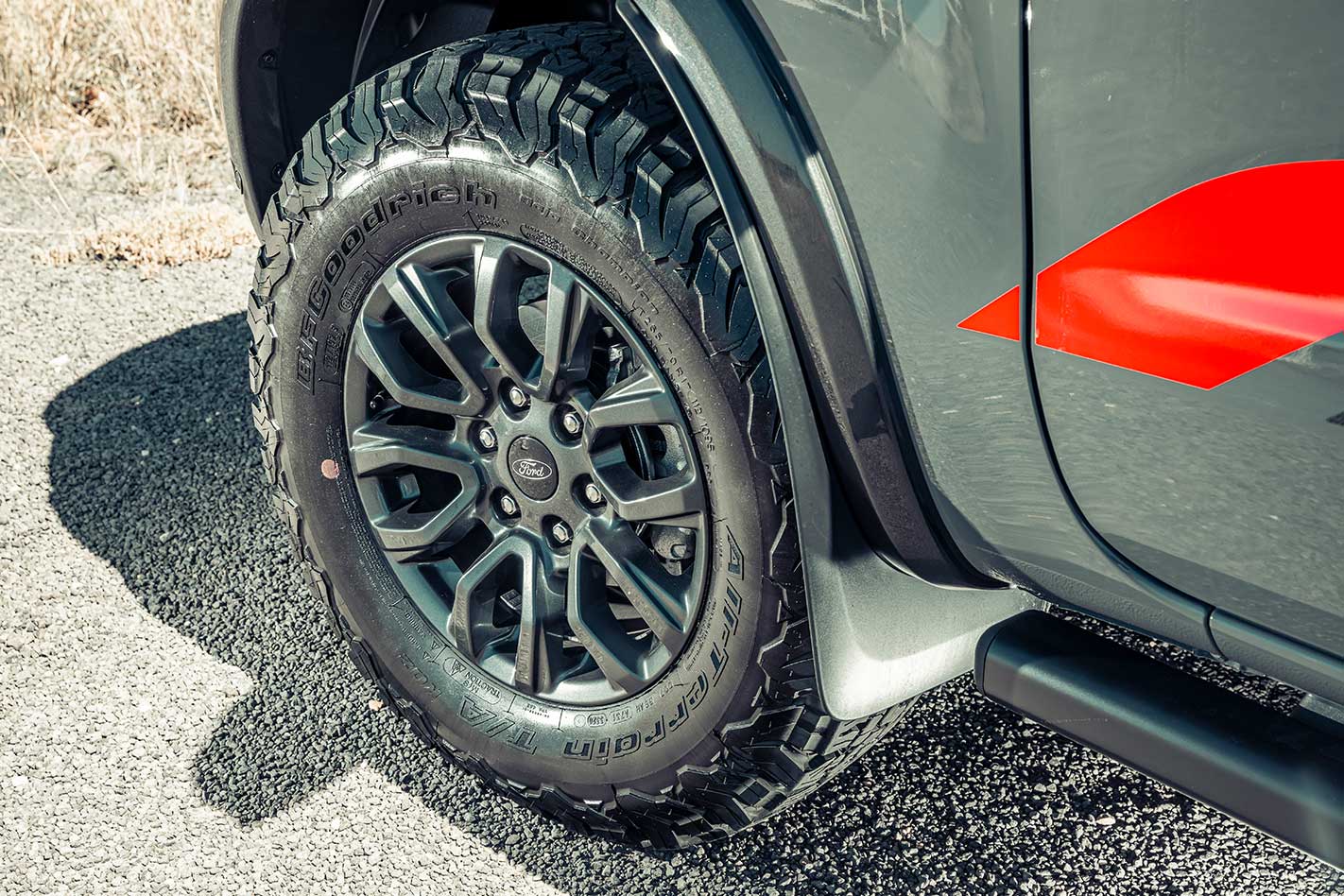
So, the X-Terrain noses ahead on pricing and features, and on the face of it, the news keeps getting worse for the ageing Ranger once you step inside.
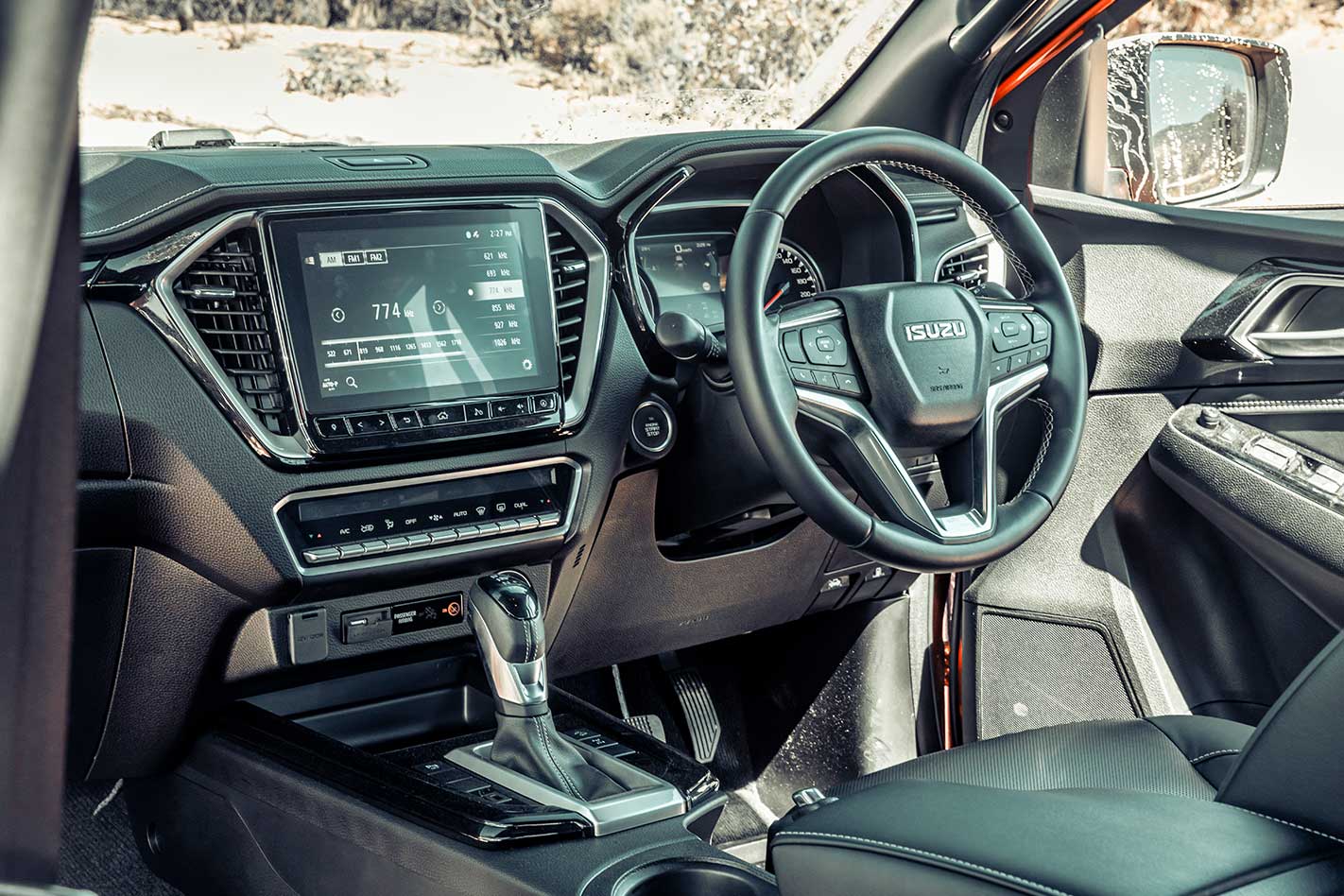
But if you want to see just how far dashboard styling and presentation has come since, then its compare and contrast time – because the Ford’s looks every inch its years (despite the 2015 mid-cycle facelift that brought in that newer fascia) while the Isuzu’s leads the way forward.
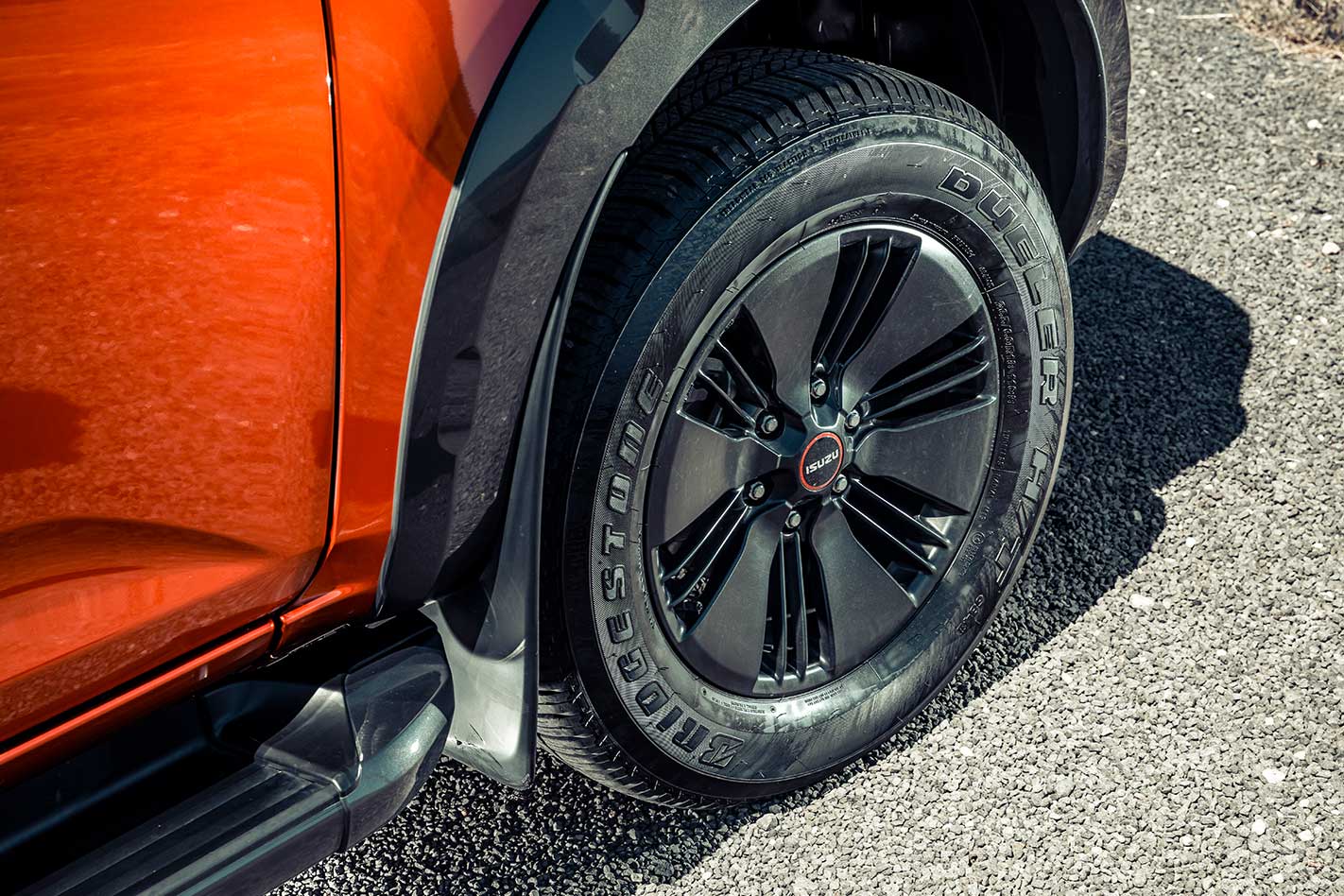
The X-Terrain, then, is more dress-shoe while the FX4 MAX is more mud-plugging sports boot (from TK Maxx at that) in their respective appearances.
Then there’s the Isuzu’s added functionality absent from the Ford – namely telescopic steering-wheel adjustability, but also the triple hidden dash compartments (though the Ranger’s glovebox, door bins and centre console box are way hungrier), sliding outboard cupholders that chill/heat beverages by dint of being located beneath vast air outlets, and powered driver’s seat. Note neither offers a front passenger seat-height booster.
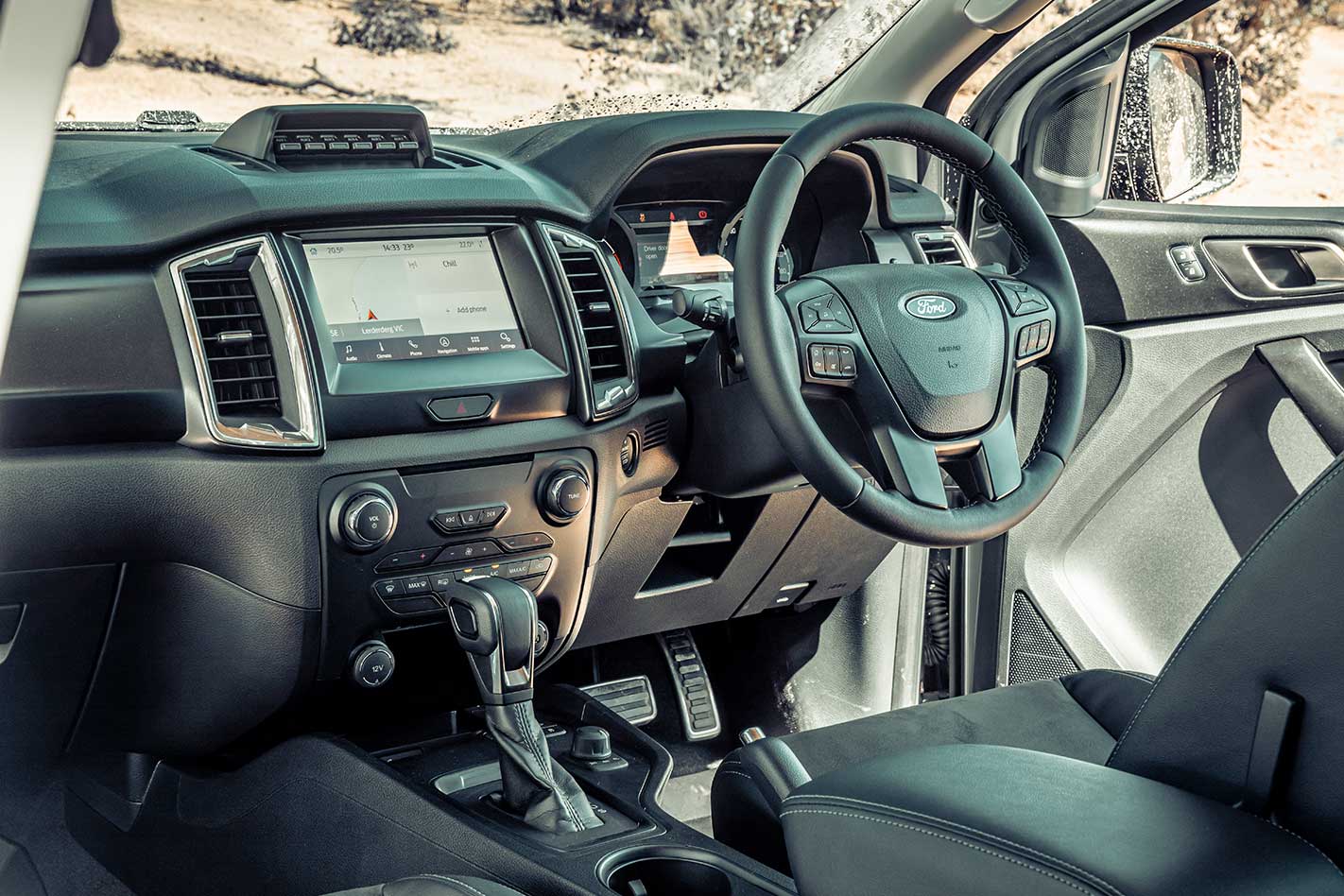
Getting to the under-seat storage requires two steps because both cushions need to be raised (and secured via very fiddly straps that require a free set of hands to raise the headrests first to latch them on), while the Ford can be lifted in one go and latched with some dextrous knee manipulation.
But once there, there’s somewhat more capacity than in Ranger and the choice of only raising/lowering one (much lighter) seat base. We’re talking minor detail differences here, folks.
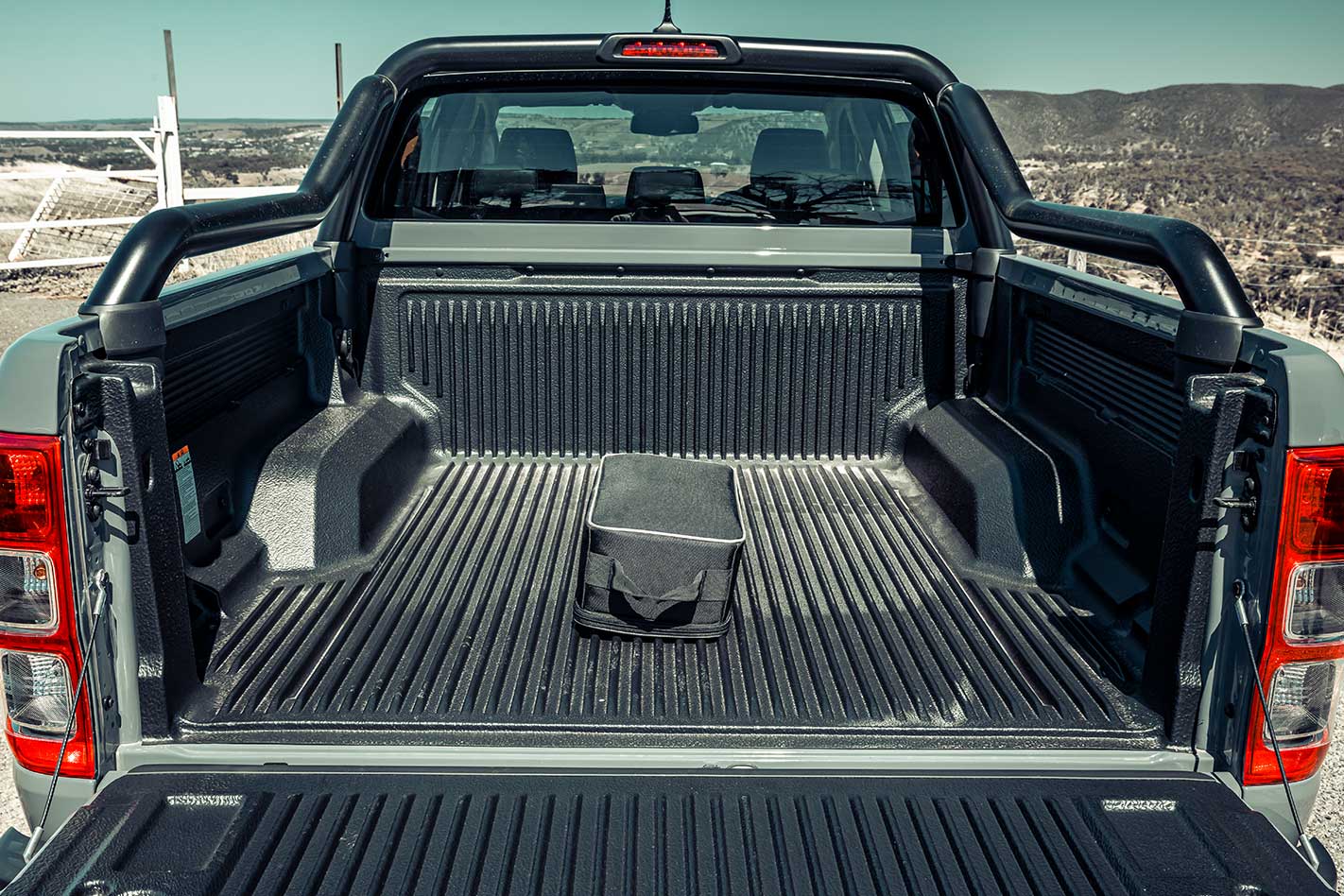
The door bins are bigger too, for bottles and such, there’s a very handy 230V domestic outlet alongside the 12V plug (which can of course be fitted with an inexpensive USB accessory), and the tailgate is nowhere near as heavy to lower and lift up again thanks to spring-loaded hinges. Or some such black magic.
Up front, the FX4 Max also claws back more ground with its easier entry/egress (shin-smashing side steps aside), larger cabin, more cossetting front seats (with lovely suede-like inserts), grippy steering wheel and old-faithful SYNC-3 multimedia functionality that looks dated but is pretty much foolproof.
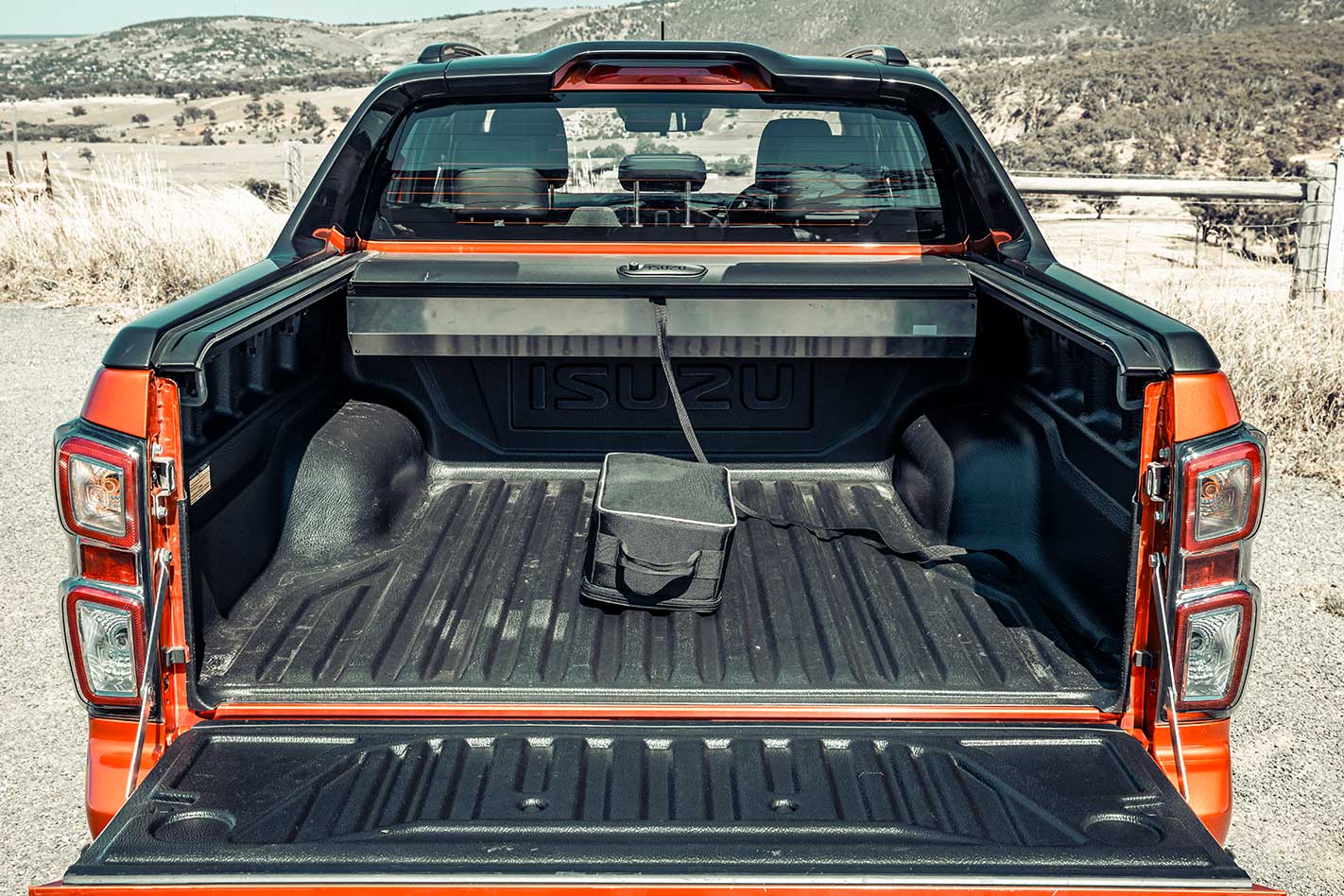
But there’s no escaping this Ranger interior’s dated and downmarket appearance. And that’s before you see the engine specs and realise that the FX4 Max is an entire litre down on the D-Max. Clearly, the time is nigh for that next-generation update, Ford… until you press the start button.
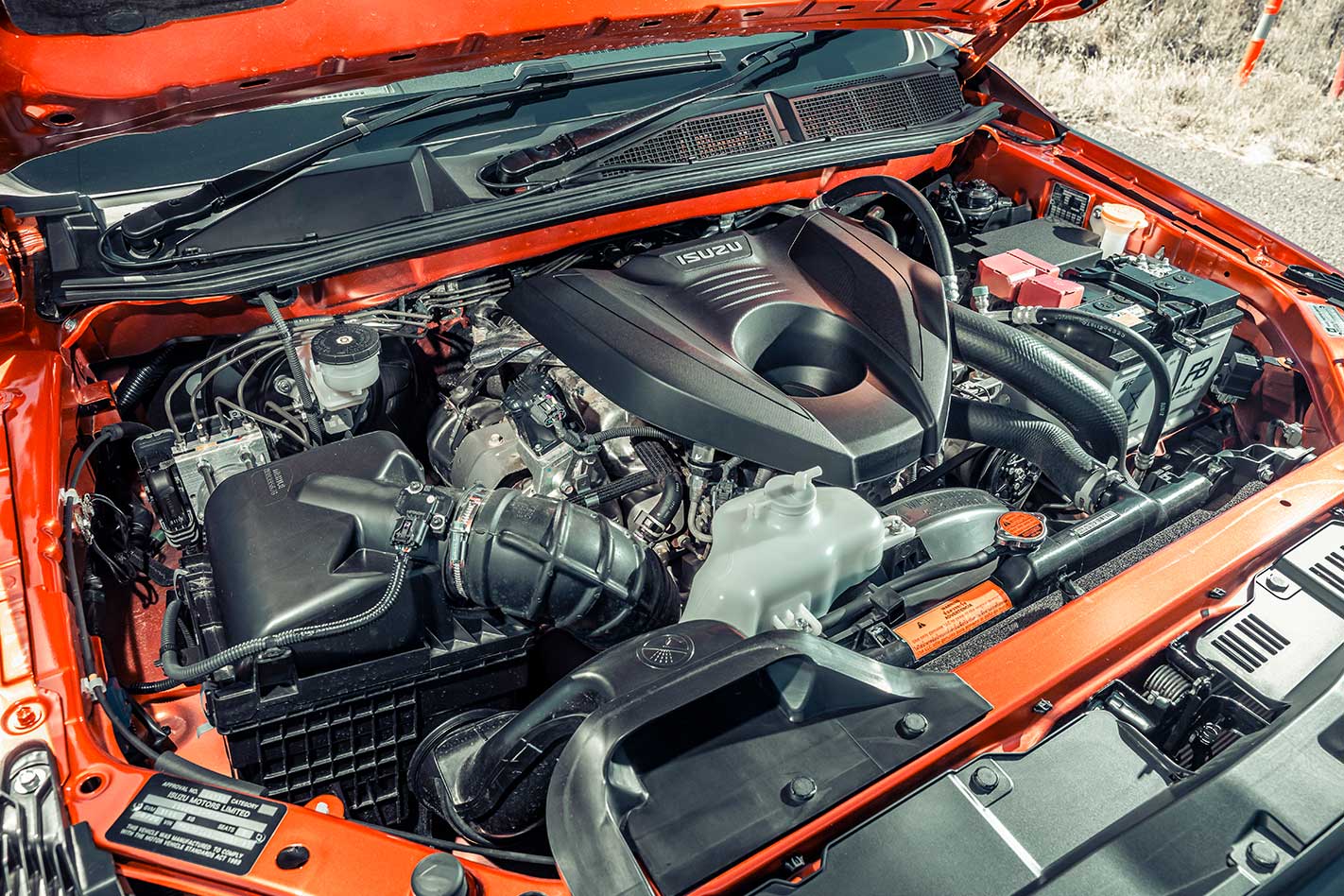
Before we reveal the result, please note that all driving was conducted with either one or two occupants on mostly sealed bitumen or over loose gravel, and without a load out back.

Not the quietest performer, granted, it’s nonetheless pleasingly responsive dicing and dealing with stop/start traffic – while still managing to feel muscular out on the open road. For most users there’s more than sufficient oomph on offer.
Given its head, however, the Ranger is ultimately the quicker and quieter worker. Despite being one-third smaller in capacity and a middle-aged Aussie male’s worth of kilos heavier, the extra turbo and four more gears work in the Ford’s favour, making it deceptively strong under acceleration, aided by that 10-speed torque-converter auto.
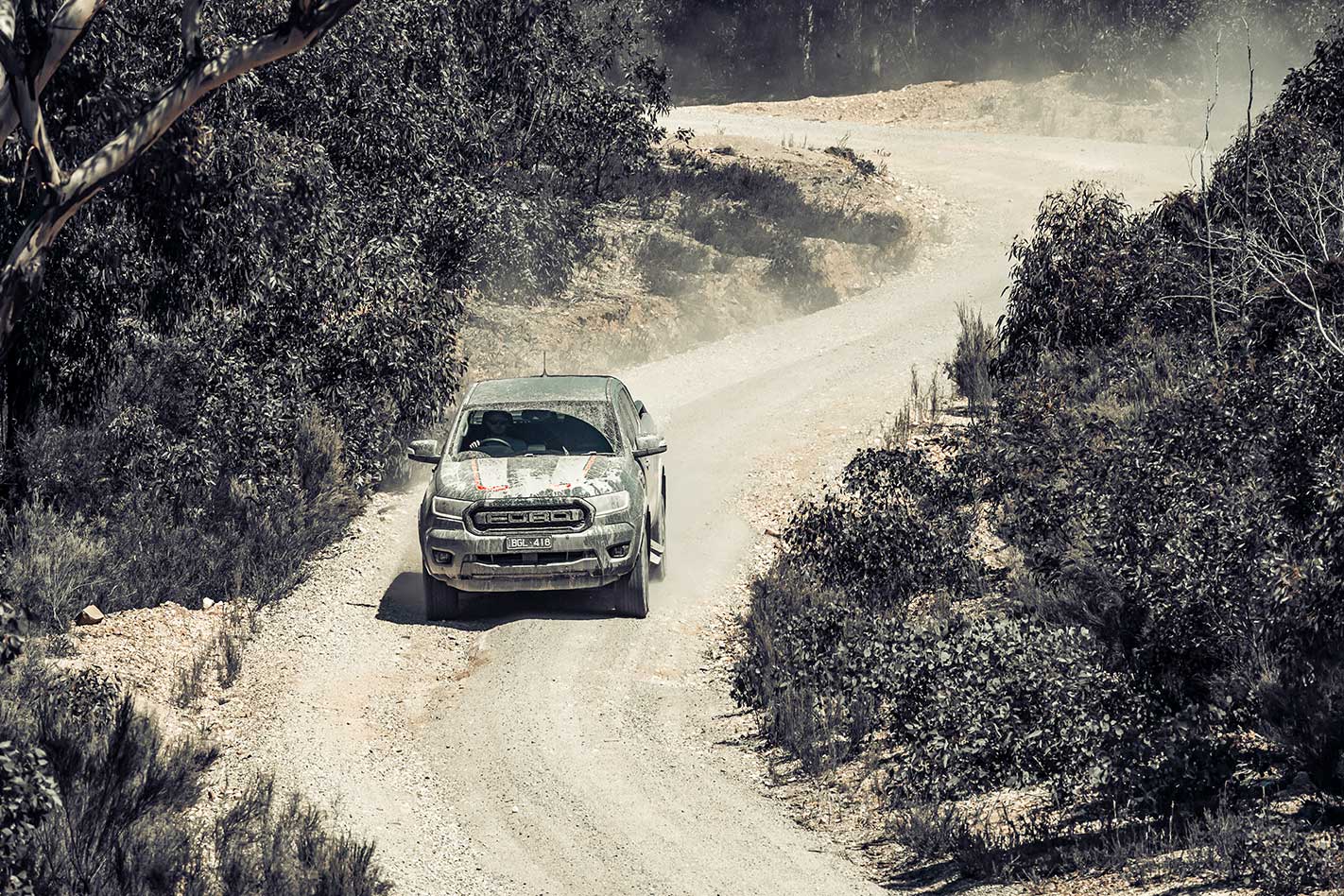
Yet it’s also neither indecisive nor jerky and compared to the 3.2-litre five-pot turbo serving lesser Rangers this powertrain’s refinement is akin to wearing earmuffs.
Shuffling between gears intuitively (making the silly thumb-operated manual shifter mechanism redundant), the FX4 Max feels a little leisurely off the line, trailing the X-Terrain to 60km/h.
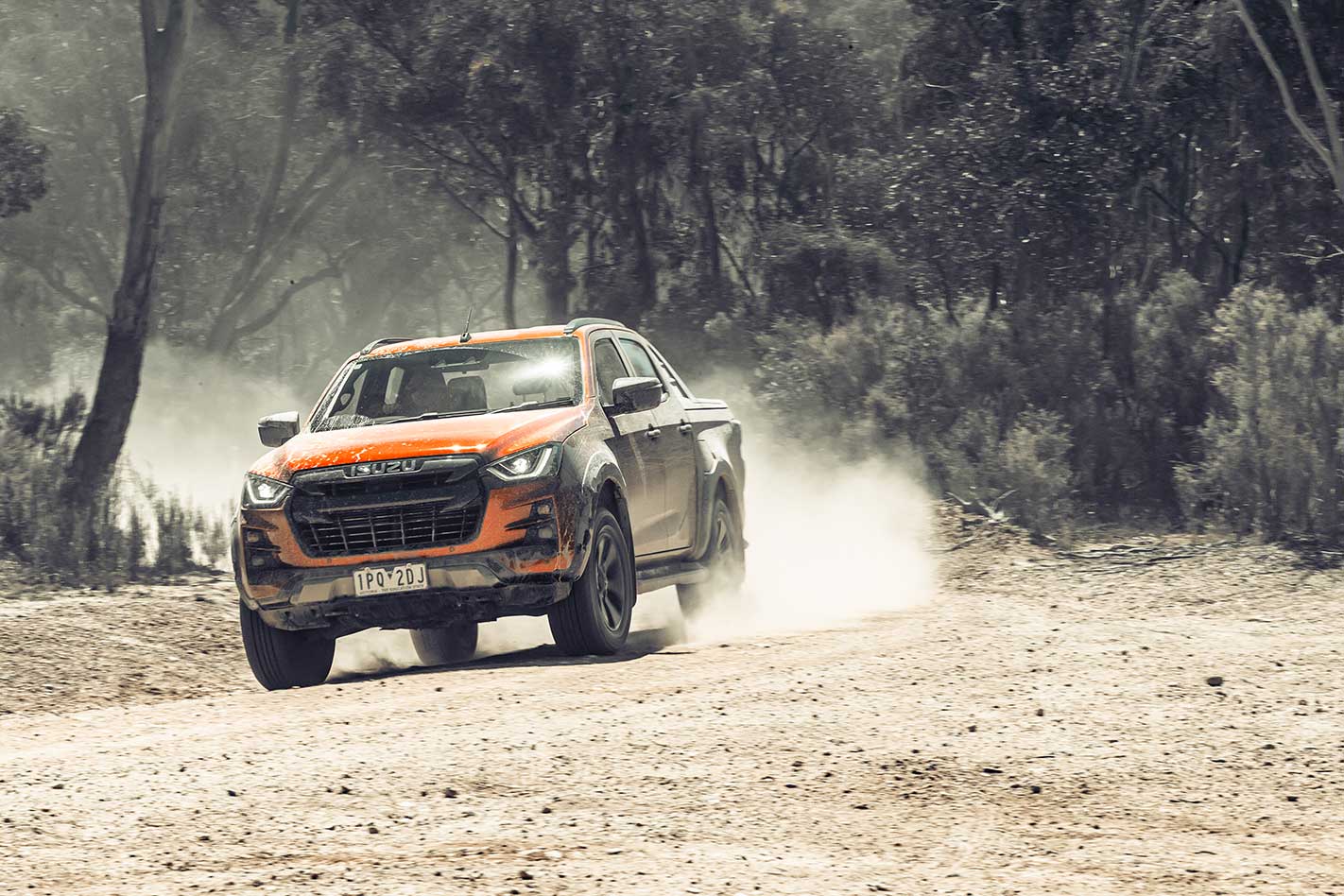
Inevitably, what the Ford’s hard-working 2.0-litre bi-turbo gains in speed it loses in real-world fuel efficiency – 10.8 litres per 100km compared to the Isuzu’s 9.7L/100km, according to our figures.
And that’s with the latter’s (standard) aluminium load cover unfurled for the duration, since the FX4 Max’s tub comes tonneau-less. With it shut we’d expect even better economy. Advantage: D-Max.
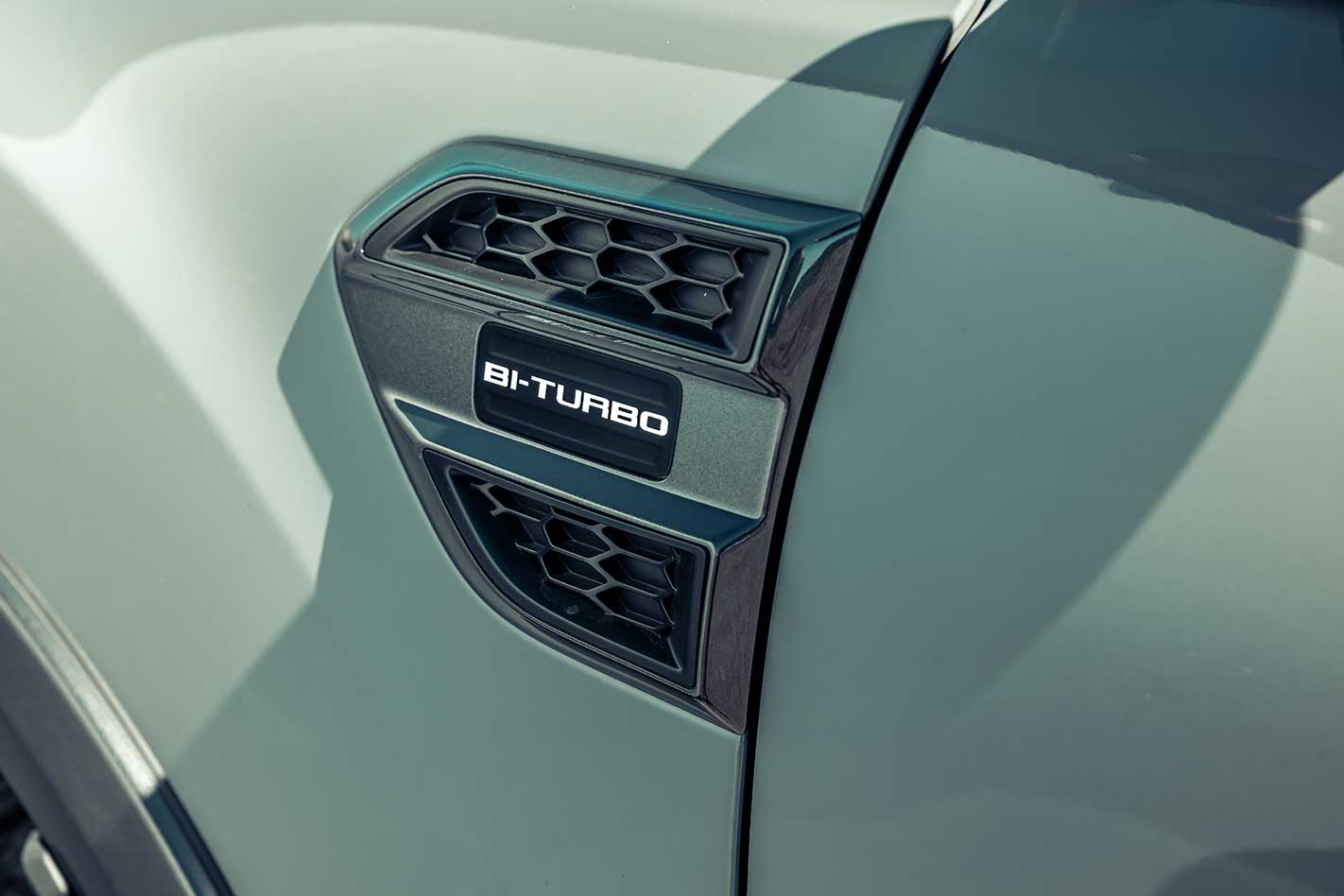
Actually, it’s quite profound, with the Ford’s renowned, comparatively fluid steering, surefooted roadholding and supple ride all noticeably blunted.
Yet even with an obviously jigglier ride, looser cornering, squealier tyres and decidedly more muted handling feedback, this Ranger remains the more involving and accomplished drive dynamically just the same, with greater cornering capabilities and more assured control at speed. And that includes on gravel as well as bitumen.
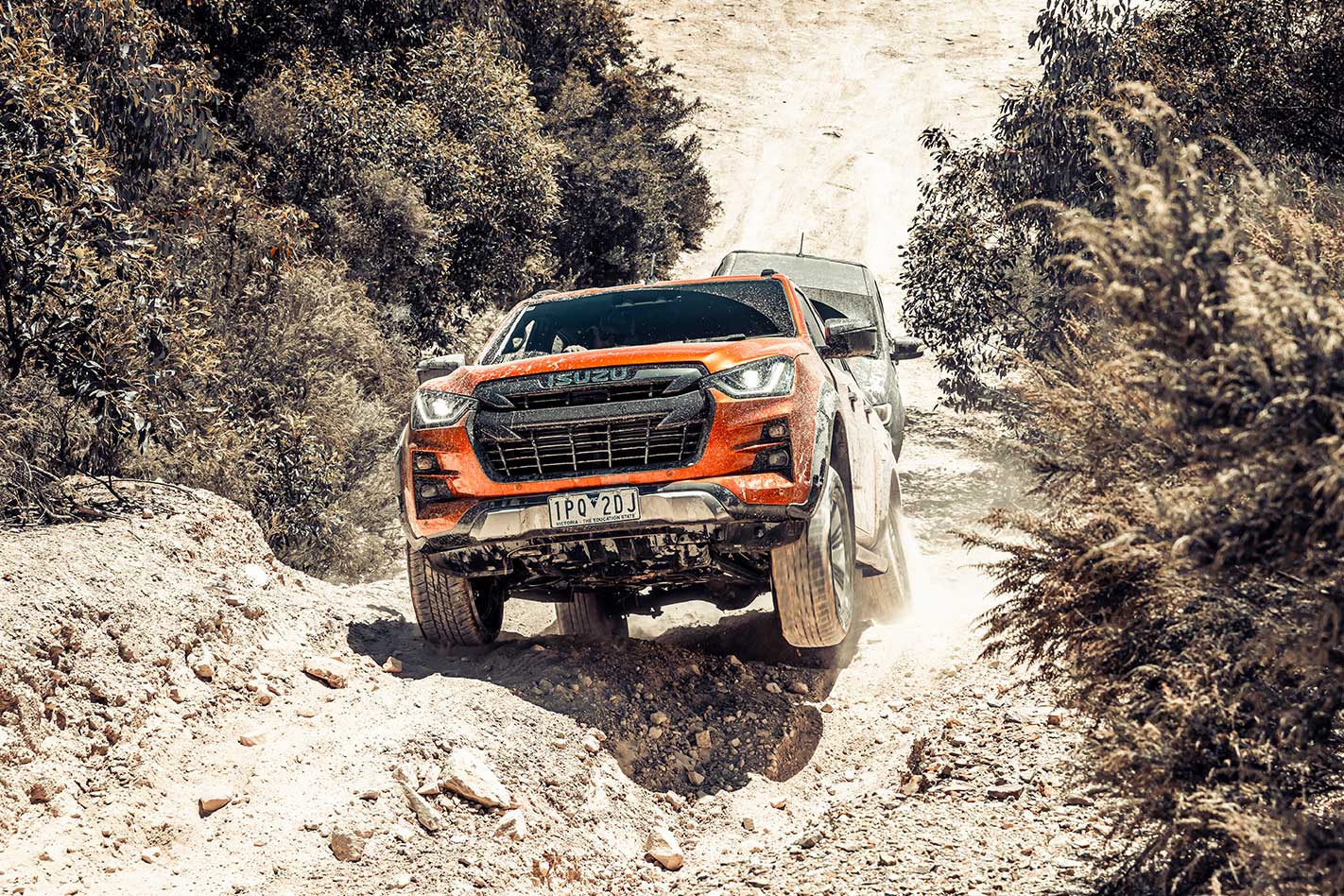
That’s not to say the X-Terrain is flawed – far from it. Aeons ahead of its cruddy predecessor, today’s D-Max treads a benign dynamic path and is all the better for it, ushering in nicely-weighted if remote steering for easy, accurate and safe handling, backed up by ample grip and acceptable road-noise insulation.
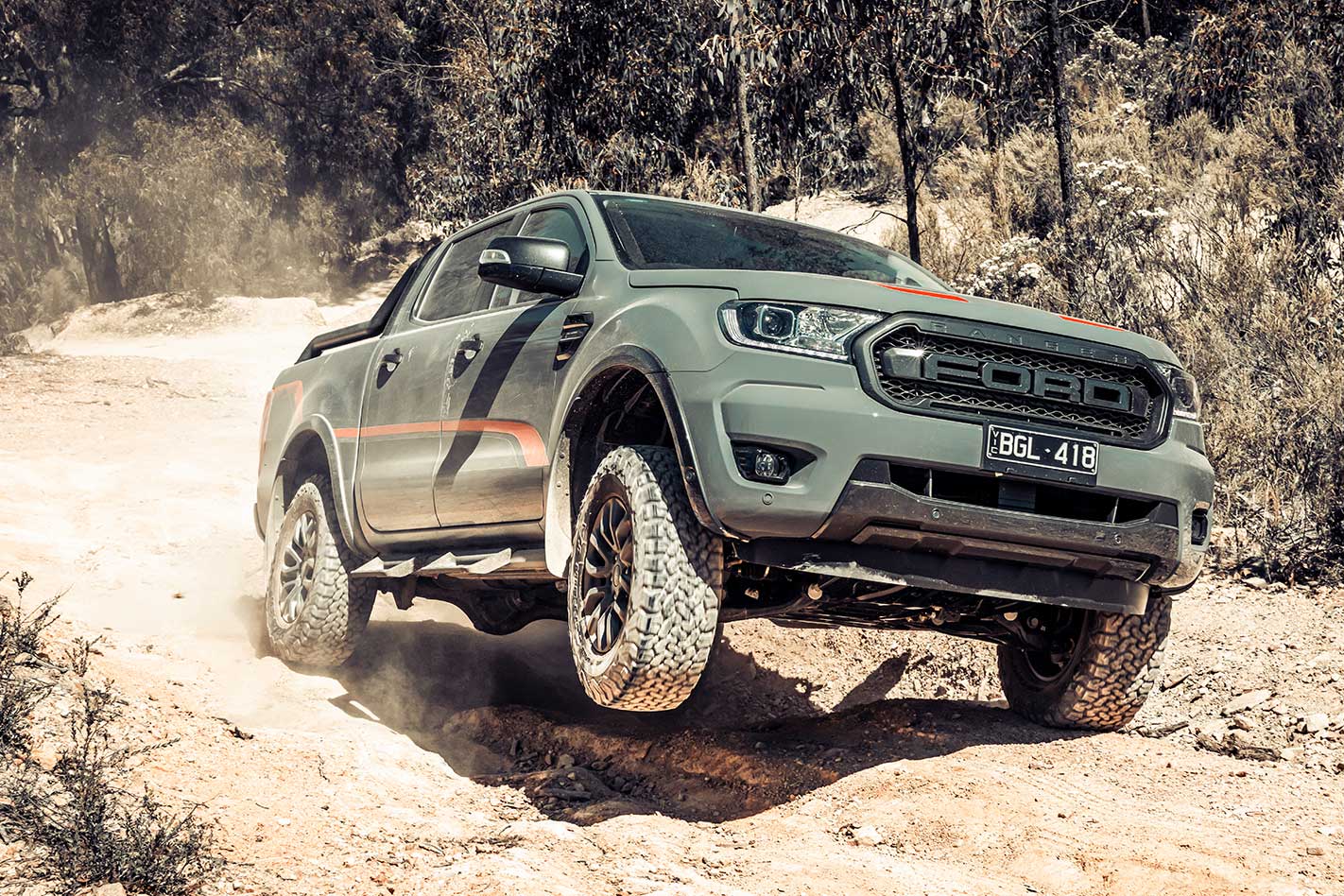
Where the X-Terrain rules is in its more-sophisticated driver-assist systems, offering the benefits of noticeably more-nuanced lane-keeping capability as well as full-stop (but not go again) adaptive cruise control functionality; and speaking of stopping, the Isuzu displayed significantly shorter stopping distances – once again betraying the FX4 Max’s choice of rubber.
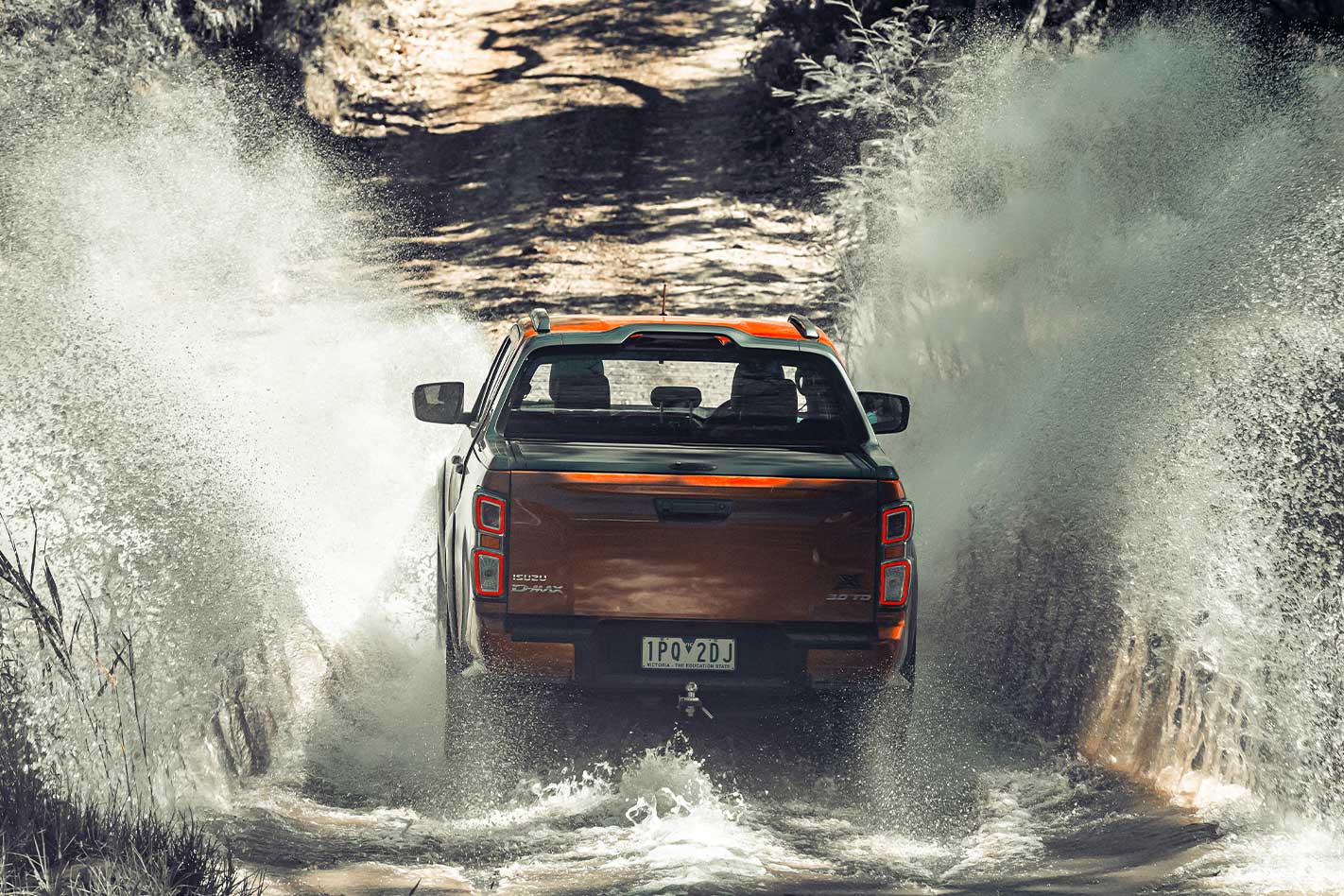
After several days assessing the X-Terrain and FX4 Max, it is clear that the latter is designed to maximise the Ranger’s off-road potential more fully compared to its more road-biased (and overall superior) Wildtrak and Raptor siblings, as well as the new D-Max, which lives between the two extremes. Yet there’s still enough regular-Ranger DNA for it to remain one of the better-driving and riding pick-ups.
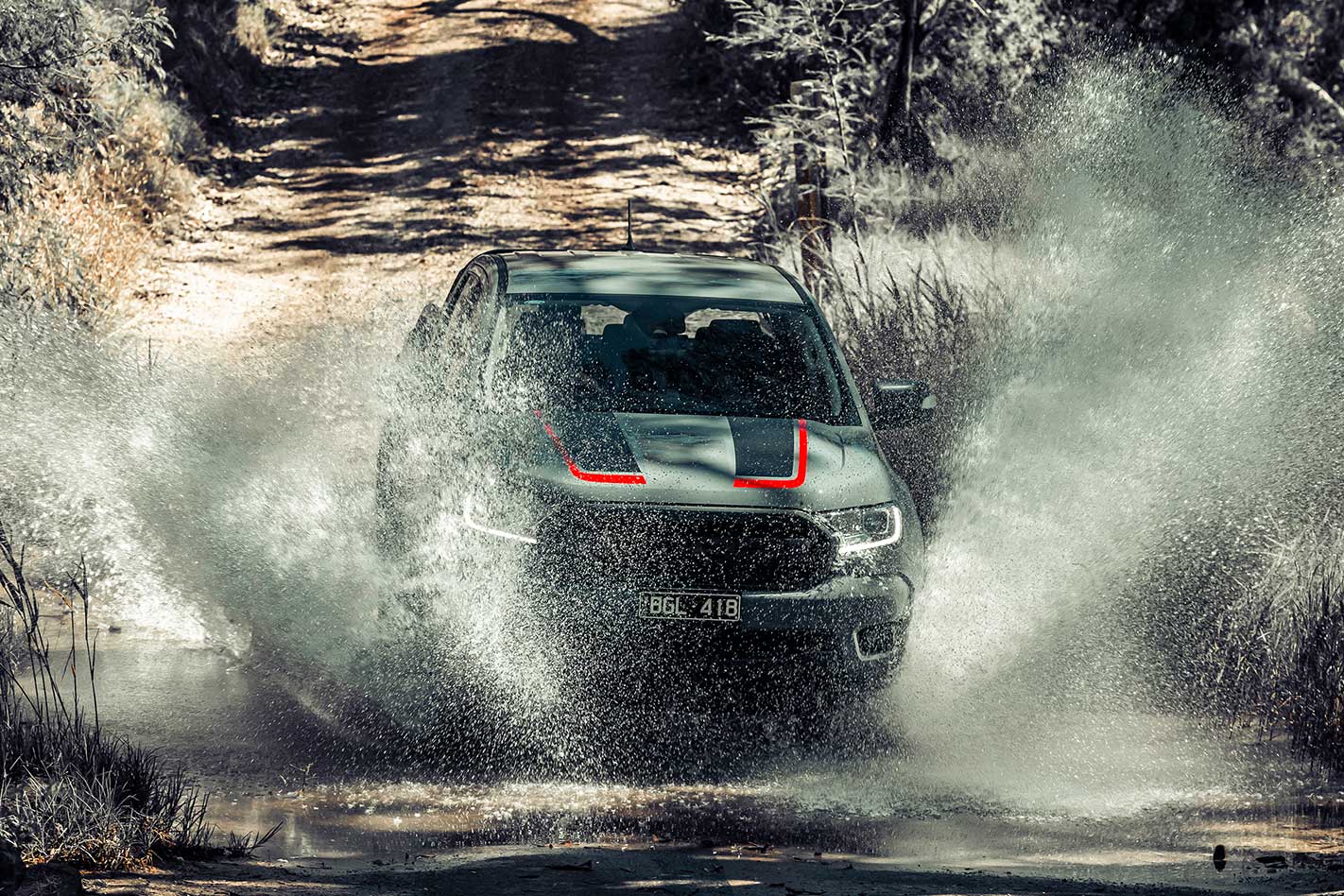
But pricing, equipment, safety, warranty, interior design, economy and resale aren’t among them, meaning that the X-Terrain offers a broader bandwidth of benefits for most consumers seeking the better buy while still having access to brilliant 4×4 ability.
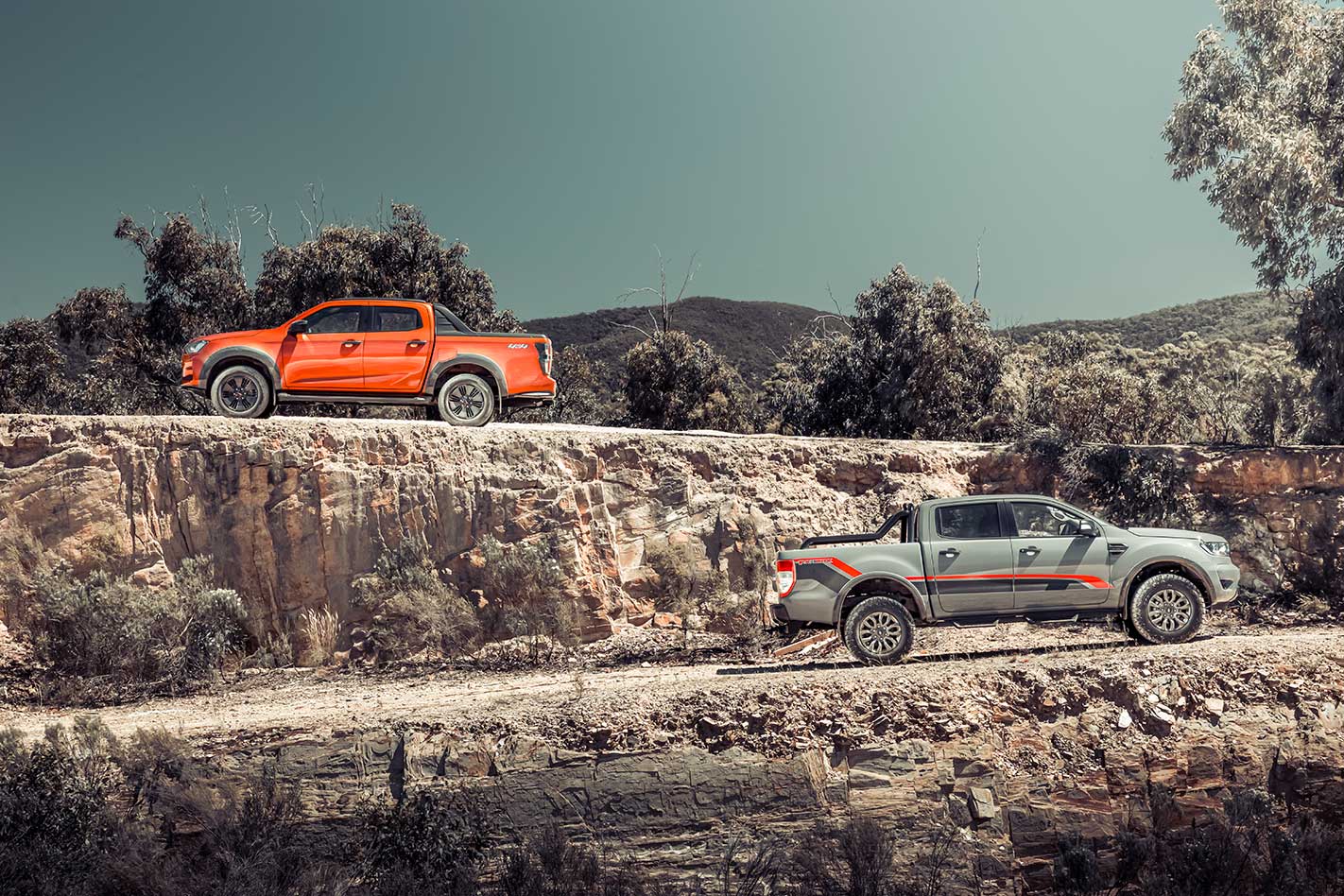
As half a century and six generations of disparately-badged trucks attest, Isuzu has a strong connection with Australians. Considering the D-Max’s direct ancestral ties, it’s fair to say the classic Ford versus Holden fight lives on in more than mere spirit.
Verdict
1st: Isuzu D-Max X-Terrain
Pros: Fuel economy; car-like interior; unsurpassed driver-assist safety; longer warranty
Cons: Rear seats need more thigh support; dreary dynamics; firm ride
7/10
2nd: Ford Ranger FX4 Max
Pros: Outstanding off-road; comfy seating; roomy cabin; punchy engine
Cons: Off-road add-ons diminish on-road capabilities; dated dash; ****ng side steps
7/10
Interior deep-dive
Ford Ranger

Function over form defines the Ranger’s dated, low-fi but user-friendly interior, with comfy seating, excellent space utilisation, easy multimedia and storage galore. But pizzazz-free XLT basis (despite the extra suede, metal pedals and other tinsel) doesn’t sit well at FX4 Max price point.
Upfitter auxiliary switch pack brings 250-amp alternator for aftermarket accessories, underlining serious off-road focus. As does 256mm ground clearance, better-than-Wildtrak/Raptor payload of 981kg, while braked towing capacity remains at 3500kg; full-sized spare and tow bar are included.
Isuzu D-Max

Way-more modern and car-like D-Max dash lords it over the rapidly ageing Ford with big (if more complicated) touchscreen, more comprehensive instrumentation, more pleasant finishes, reach-adjustable steering and greater storage.
All underline the Isuzu’s strong value-for-money appeal, while back-seat area presentation is also significantly ahead. But seats aren’t quite as comfy and the rear not as roomy either as longer-wheelbase Ranger. Ground clearance is 240mm, payload is 970kg and braked towing capacity is also 3500kg; spare is full-sized.
Specifications
FORD RANGER FX4 MAX
Body: 4-door, 5-seat ute Drive: rear- and all-wheel Engine: 1996cc inline-4cyl diesel, DOHC, 16v, twin-turbo Power: 157kW @ 3750rpm Torque: 500Nm @ 1750-2000rpm Weight: 2219kg Power/weight: 71kW/tonne Payload: 981kg Transmission: 10-speed automatic L/W/H: 5446/1977/1852mm Wheelbase: 3220mm Tracks: 1586/1586mm (f/r) Fuel tank: 80 litres Fuel economy: 10.8L/100km (as tested) Suspension: struts, A-arms, coil springs, anti-roll bar (f); leaf springs, dampers, anti-roll bar (r) Steering: electrically assisted rack-and-pinion Turning circle: 12.7m (3.2 turns lock-to-lock) Brakes: 310mm ventilated discs (f); 295mm drums (r) Tyres: 265/70R17 109S (f/r) BF Goodrich All-Terrain T/A K02 Price: $65,940/As tested $68,190**
ISUZU D-MAX X-TERRAIN
Body: 4-door, 5-seat ute Drive: rear- and all-wheel Engine: 2999cc inline-4cyl diesel, DOHC, 16v, turbo Power: 140kW @ 3600rpm Torque: 450Nm @ 1600-2600rpm Weight: 2130kg Power/weight: 66kW/tonne Payload: 970kg Transmission: 6-speed automatic L/W/H: 5280/1880/1811mm Wheelbase: 3125mm Tracks: 1570mm (f/r) Fuel tank: 76 litres Fuel economy: 9.7L/100km (as tested) Suspension: struts, A-arms, coil springs, anti-roll bar (f); leaf springs, dampers, anti-roll bar (r) Steering: electrically assisted rack-and-pinion Turning circle: 12.5m (3.8 turns lock-to-lock) Brakes: 320mm ventilated discs (f); 295mm rear drums (r) Tyres: 265/60 R18 110T (f/r) Bridgestone Dueler H/T 684II Price: $62,925 driveaway**
Performance
Ford Ranger FX4 MAX
0-10km/h: 0.7sec 0-20km/h: 1.2sec 0-30km/h; 1.8sec 0-40km/h: 2.6sec 0-50km/h: 3.5sec 0-60km/h: 4.5sec 0-70km/h: 5.6sec 0-80km/h: 6.9sec 0-90km/h: 8.2sec 0-100km/h: 9.9sec 0-120km/h: 13.8sec 0-130km/h: 16.1sec 0-140km/h: 19.0sec
0-400m: 17.1sec @ 132.4km/h
80-120km/h: 6.7s
100km/h-0: 43.8m
Isuzu D-Max X-Terrain
0-10km/h: 0.6sec 0-20km/h: 1.0sec 0-30km/h: 1.5sec 0-40km/h: 2.3sec 0-50km/h: 3.2sec 0-60km/h: 4.2sec 0-70km/h: 5.5sec 0-80km/h: 6.7sec 0-90km/h: 8.0sec 0-100km/h: 9.9sec 0-110km/h: 11.8sec 0-120km/h: 14.0sec 0-130km/h: 16.5sec 0-140km/h: 20.2sec
0-400m: 17.0sec @ 131.7km/h
80-120km/h: 7.3s
100km/h-0: 41.4m
